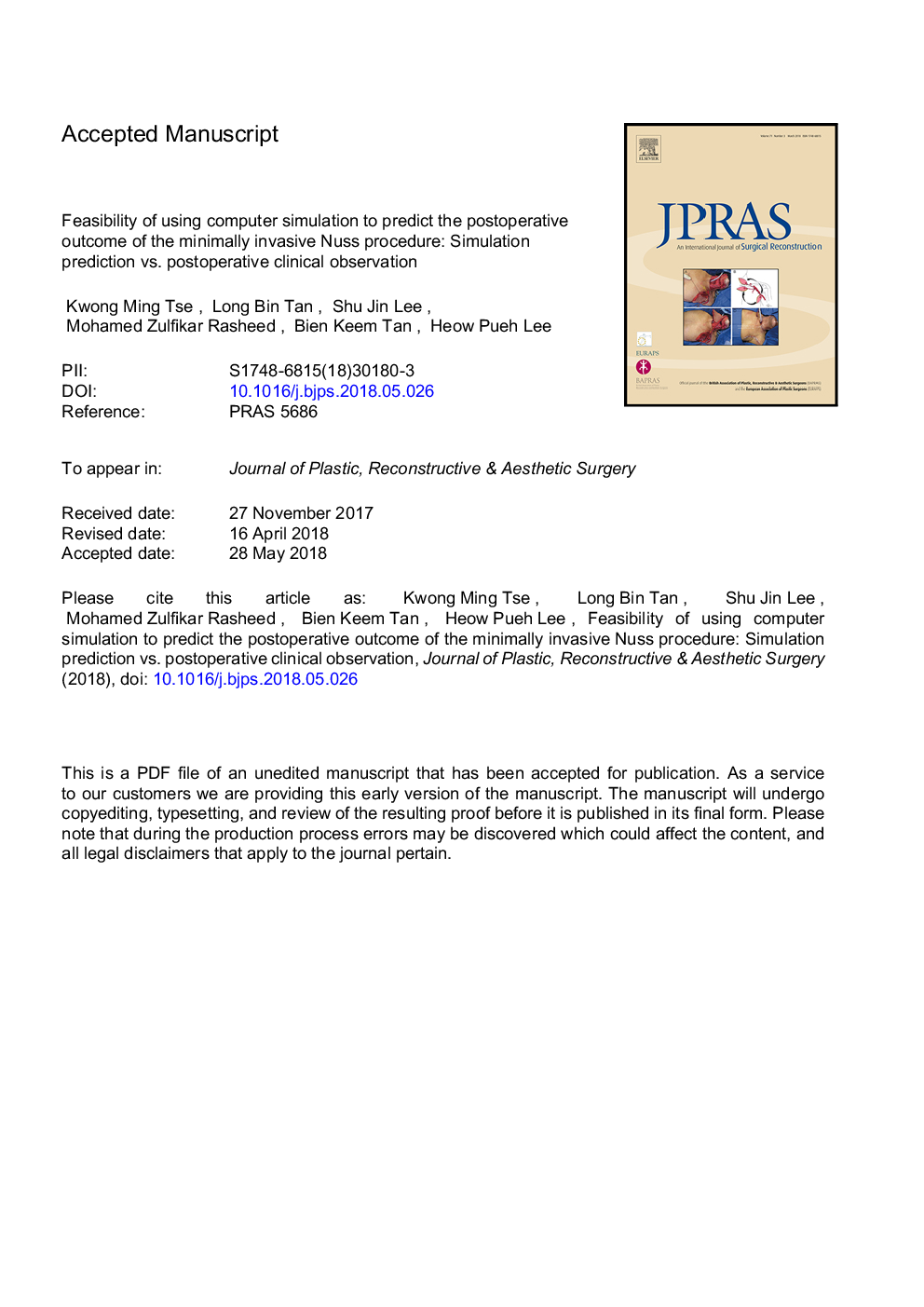| Article ID | Journal | Published Year | Pages | File Type |
|---|---|---|---|---|
| 10221896 | Journal of Plastic, Reconstructive & Aesthetic Surgery | 2018 | 25 Pages |
Abstract
The Nuss procedure is the most minimally invasive and commonly used surgical correction for pectus excavatum (PE) by using a prebent pectus bar to elevate the deformed chest wall. However, there are some complications associated with this procedure such as postoperative pain as well as surgical uncertainties because of human judgment. It is therefore important to understand the biomechanical effect of the pectus bar on PE thoraces undergoing an operation to alleviate the postoperative pain as well as to improve surgical outcome. The current study incorporated the finite element method (FEM) to simulate the entire Nuss procedure including the flipping process of the pectus bar on a preoperative PE patient-specific thorax model, in conjunction with comparison against the postoperative CT scans. The mid-sagittal sternovertebral elevation was found to be within 5.32â¯mm, whereas the transverse sternal deviations ranged from 1.59 to 3.02â¯mm. The average discrepancy between the predicted contour and postoperative CT contour was approximately 3%. On a different note, the stress and strain distributions largely concurred with reported findings. High bilateral stress was seen to occur at the back of ribs near the vertebral column, and particularly over the second to fifth ribs, whereas the greatest strain was found to be confined to the regions of costal cartilages. It is evident that the FEM is a feasible and robust approach in predicting the outcome of the mechanical surgical procedure. This contributes to the future development of a predictive tool incorporated in surgical planning to enhance surgical management of PE.
Related Topics
Health Sciences
Medicine and Dentistry
Otorhinolaryngology and Facial Plastic Surgery
Authors
Kwong Ming Tse, Long Bin Tan, Shu Jin Lee, Mohamed Zulfikar Rasheed, Bien Keem Tan, Heow Pueh Lee,
